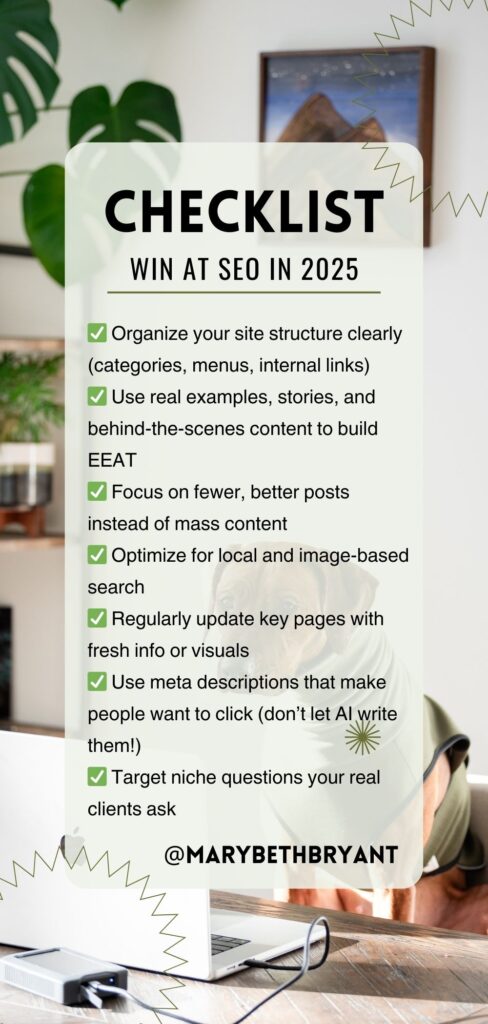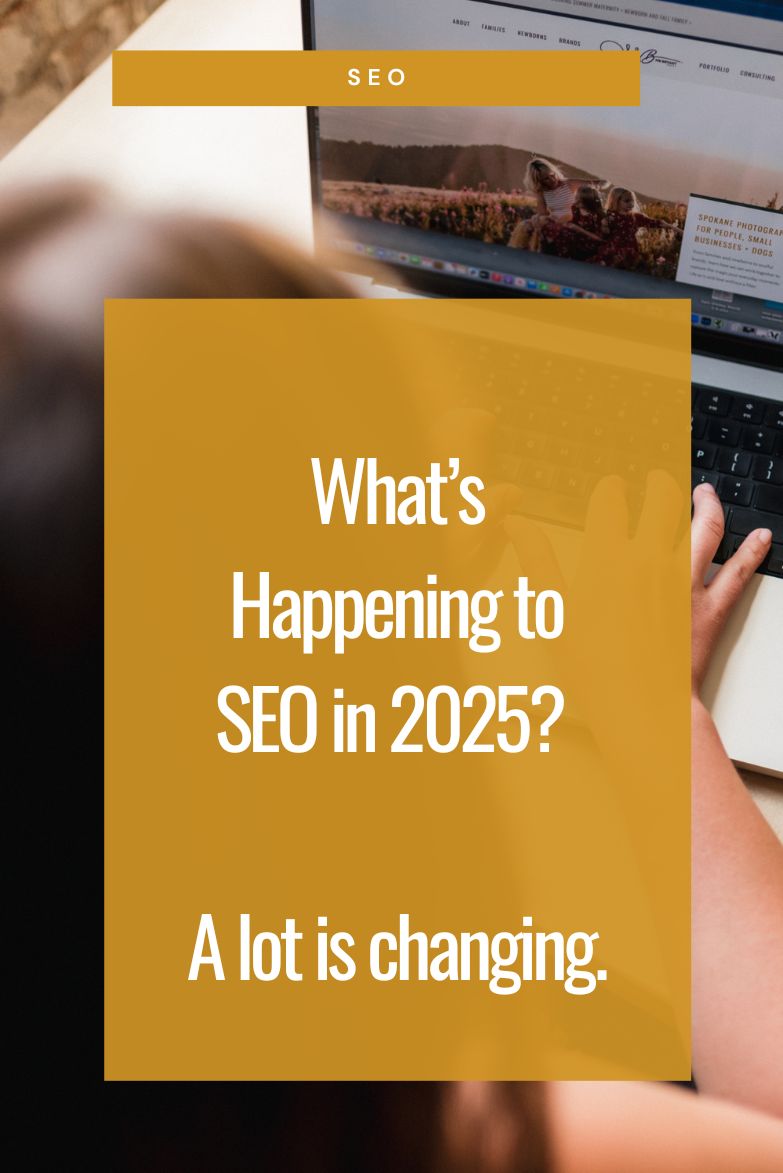If you’ve felt like SEO in 2025 is getting murkier by the day—especially with AI content flooding the internet and Google showing answers before anyone even clicks—you’re not alone. Many photographers and creatives are asking the same question: is SEO dead? Spoiler alert: it’s not. But it is evolving in big ways.
As a photographer-turned-SEO educator, I’ve lived through the algorithm rollercoasters and the “content is king” era. Now, in 2025, we’re entering a new chapter—one that still values smart strategy, but demands a more intentional approach. Let’s break down what’s changing, what’s staying critical, and how creatives like you can still win traffic in an AI-shaped search landscape.
Is SEO in 2025 Still Worth It?
Let’s clear this up right away: SEO in 2025 is far from dead. But it has outgrown the old playbook of churning out blog posts just for the sake of volume. Google knows AI can do that now—and frankly, it’s unimpressed.
What Google is prioritizing now is:
- Content with depth and purpose
- Pages that demonstrate real expertise and experience
- Sites that are well-structured and technically sound
SEO isn’t about tricking the algorithm. It’s about making sure your real value as a creative is clear and accessible.
If you’re not sure where to start, check out how I recently updated my photography blog for SEO and Google’s latest updates.
What’s Actually Changing in SEO Right Now?
Here’s the big shift: Google is doing more answering on the search page itself. This means fewer clicks for everyone, especially on broad, generic questions. Think “what’s the best camera for family photography?”—Google often gives that answer before anyone gets a chance to rank.
So does that mean you’re out of luck? Not at all.
Instead of competing for high-volume, surface-level queries, creatives need to go deeper and more specific. That’s where Google still relies on you.
The Critical Role of Technical SEO in 2025
One thing that hasn’t changed? Technical SEO still matters—maybe more than ever.
Google’s AI tools might be smart, but they still need a map. That means:
- Clear site structure
- Consistent internal linking
- Descriptive meta titles and meta descriptions
If your site is messy or hard to navigate, Google won’t prioritize it—no matter how brilliant your content is.
“Google can’t rank what it can’t understand.”
Treat your website like a well-organized portfolio. Every page should connect logically, clearly signal what it’s about, and lead the visitor (and the Googlebot) through a meaningful experience.
For a deeper dive into optimizing your headings and structure, read this post on how to use header tags strategically. It really makes a big difference in your search appearance to have a well structured site.
What EEAT Means (With Real-Life Creative Examples)
EEAT stands for: Experience, Expertise, Authoritativeness, and Trust.
In 2025, this concept is the heart of SEO. Google wants to rank content created by actual humans with lived experience, not just algorithm-fed machines.
What Does EEAT Look Like?
- A family photographer writing a blog post on “how to prep kids for a shoot” and including stories from real sessions.
- A ceramic artist sharing photos and process videos for their glazing techniques.
- A wedding photographer explaining how they handle tricky lighting situations—and showing before/after edits.
This is the kind of content AI can’t fake. And Google knows it.
Why Fewer Clicks Doesn’t Mean Less Opportunity
Yes, click-through rates are down in many niches. But that doesn’t mean people aren’t searching—it just means we have to meet them differently.
Here’s where creatives can still thrive:
- Ultimate guides (think: “The Full Guide to Brand Photography for Wellness Coaches”)
- Niche-specific posts that answer questions AI doesn’t do well (like “How to photograph glass art without reflections”)
- Long-form content that shows depth and authority
- Image search optimization (photographers: this is your playground!)
- Local SEO for attracting clients in your area
- “People also ask” opportunities to answer layered or follow-up questions
For more tools and templates to help with all of the above, check out my free SEO resources for creatives.

Checklist: How to Win with SEO in 2025
Here’s your creative-friendly action plan:
✅ Organize your site structure clearly (categories, menus, internal links)
✅ Use real examples, stories, and behind-the-scenes content to build EEAT
✅ Focus on fewer, better posts instead of mass content
✅ Optimize for local and image-based search
✅ Regularly update key pages with fresh info or visuals
✅ Use meta descriptions that make people want to click (don’t let AI write them!)
✅ Target niche questions your real clients ask
Final Thoughts on SEO in 2025
SEO in 2025 isn’t dead—it’s just grown up. It’s moved past hacks and shortcuts and into a space that values originality, strategy, and clarity.
For photographers and creatives, that’s good news. Because no AI can replicate your lived experience, your eye, or your creative process. As long as your site reflects you clearly—and helps Google understand who you are and how you help—you’re still very much in the game.
